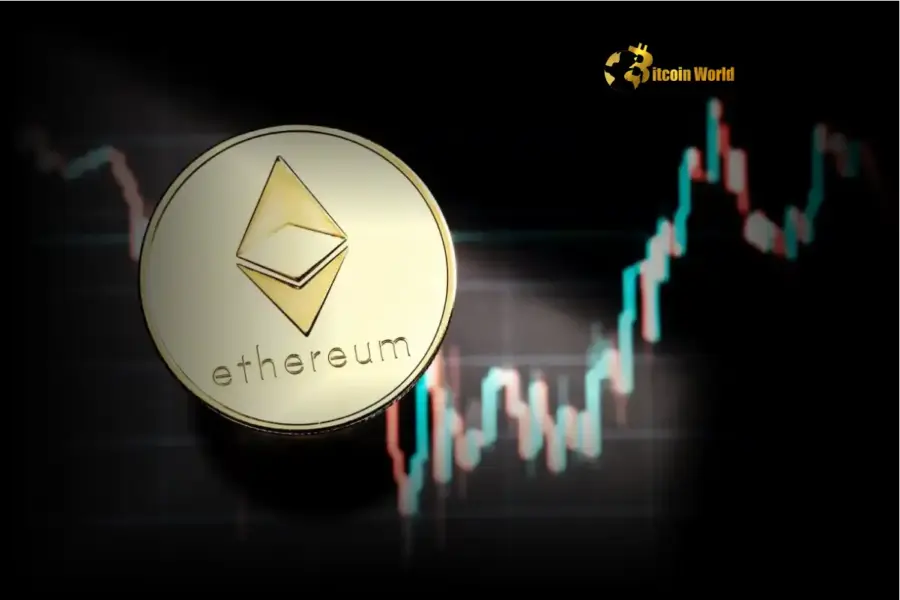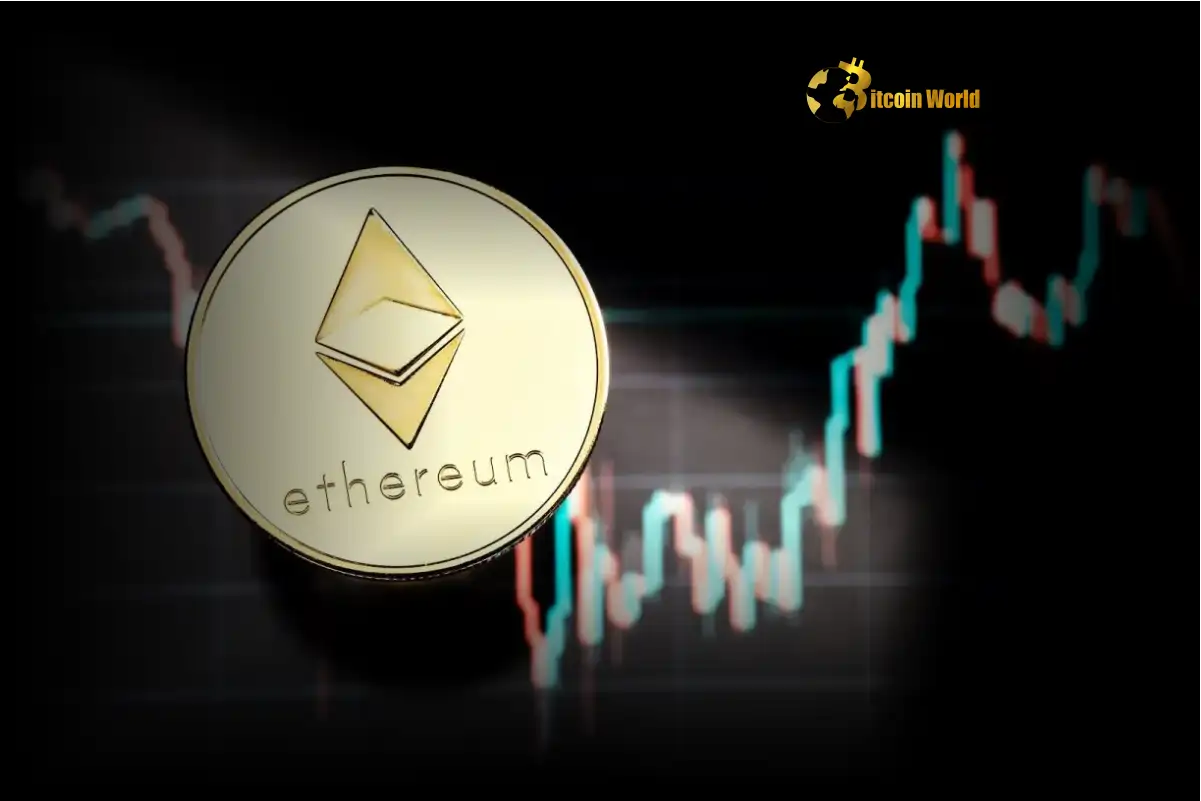Ethereum DEX Activity Surges 73%, Signaling Exciting Retail Return
1
0

BitcoinWorld

Ethereum DEX Activity Surges 73%, Signaling Exciting Retail Return
The world of decentralized finance (DeFi) on Ethereum is buzzing with activity. Recent data paints a clear picture: ethereum dex activity has seen a significant uptick, pointing towards renewed interest in peer-to-peer trading platforms. This surge is more than just numbers; it could signal a shift in market dynamics, potentially heralding the return of the crucial retail trader segment.
What’s Driving the Jump in Ethereum DEX Activity?
According to data from The Block, daily active users on Ethereum decentralized exchanges (DEXs) witnessed a remarkable 73% jump this month. The number of unique wallets interacting with DEXs daily soared to a three-month high of 64,000, a substantial increase from the 37,000 recorded just weeks prior on May 4th. This kind of user growth is a key indicator of engagement within the DeFi ecosystem on Ethereum.
However, while user activity is climbing, the overall monthly trading volume on Ethereum DEXs tells a slightly different story. Despite the surge in users, the aggregate monthly volume has remained relatively flat, hovering around the $15 billion mark. This divergence between user growth and stagnant volume suggests that the average trade size might be decreasing. This is a crucial point we’ll explore further.
Decoding the Data: Are More Retail Crypto Traders Arriving?
The combination of rising user numbers and flat trading volume strongly suggests that the recent surge in ethereum dex activity is being fueled by smaller, individual trades – a hallmark of retail market participation. Larger, institutional players or whales often execute fewer, but significantly larger, trades which would typically push the total volume higher alongside user growth.
Analysts interpret this trend as a potential sign of early retail momentum building within the crypto market. Retail traders are often the first wave to return to the market after a period of consolidation or price decline. Their increased presence on DEXs, particularly on Ethereum, could be an early signal of broader market confidence returning.
- User Growth: 73% increase in daily active users.
- User Count: Reached a 3-month high of 64,000 daily users.
- Trading Volume: Remains flat at approximately $15 billion monthly.
- Interpretation: More users making smaller trades, indicative of retail activity.
Uniswap Activity Continues to Dominate the Landscape
In the competitive world of decentralized exchanges on Ethereum, one platform continues to reign supreme: Uniswap. The data clearly shows Uniswap’s overwhelming dominance. It currently captures an astonishing 97% of all user activity on Ethereum DEXs. This means for every 100 users interacting with a DEX on Ethereum, 97 of them are using Uniswap.
This level of market share is unprecedented and highlights Uniswap’s strong network effects, user trust, and liquidity. Uniswap also accounts for the vast majority of the trading volume, contributing approximately $13 billion to the total $15 billion monthly figure. This cements its position as the go-to platform for swapping tokens on the Ethereum blockchain.
Why is Uniswap So Dominant?
Several factors contribute to Uniswap’s leading position:
- First Mover Advantage: As one of the earliest and most successful automated market makers (AMMs), Uniswap built a strong brand and user base early on.
- Liquidity: Liquidity attracts traders, and traders attract liquidity providers. Uniswap has built deep liquidity pools for a wide range of token pairs, making swaps efficient and low-slippage.
- Ease of Use: Compared to traditional exchanges or even some other DEXs, Uniswap’s interface is relatively simple and intuitive for basic swaps.
- Token Support: Uniswap supports a vast number of ERC-20 tokens, including many new and niche tokens that may not be listed elsewhere.
- Integration: Uniswap is integrated into countless wallets, aggregators, and DeFi protocols, making it easily accessible.
Understanding Decentralized Exchanges (DEXs)
For those new to the concept, decentralized exchanges are peer-to-peer platforms that allow users to trade cryptocurrencies directly with each other, without the need for a central intermediary like a traditional exchange (e.g., Coinbase, Binance). Trades are executed automatically via smart contracts on a blockchain, like Ethereum.
The primary benefits of using DEXs include:
- Control over Funds: Users retain custody of their private keys and assets throughout the trading process.
- Increased Security: Eliminates the risk of a central exchange being hacked and user funds being stolen.
- Transparency: All transactions are recorded on the public blockchain.
- Access to More Tokens: DEXs often list new and smaller tokens sooner than centralized exchanges.
- Permissionless: Anyone can typically use a DEX without needing to go through extensive KYC (Know Your Customer) verification processes (though this is evolving).
While they offer significant advantages, DEXs can also present challenges, such as higher transaction fees (especially on Ethereum during peak times), potential for impermanent loss for liquidity providers, and a steeper learning curve for new users compared to centralized platforms.
Analyzing DEX Trading Volume: What Does Flat Volume Tell Us?
The flat dex trading volume figure of $15 billion monthly, juxtaposed with the sharp rise in users, is the most intriguing data point. If more people are trading, why isn’t the total value of trades increasing proportionally?
Here’s a breakdown of possible reasons:
| Metric | Recent Trend | Implication |
|---|---|---|
| Daily Active Users | Up 73% | Increased participation, more individual traders |
| Monthly Trading Volume | Flat ($15B) | Average trade size is likely decreasing |
| Uniswap User Share | 97% | Dominance of one platform |
| Uniswap Volume Share | ~87% ($13B of $15B) | Majority of value flows through Uniswap |
The data suggests that the market is currently attracting individuals making smaller, perhaps more speculative or exploratory, trades. This aligns perfectly with the ‘retail momentum’ hypothesis. It could also indicate that while many new users are joining, they might be trading smaller amounts due to market uncertainty, limited capital, or simply getting comfortable with DEX platforms.
It’s also worth noting that $15 billion in monthly dex trading volume on Ethereum is still a significant figure, representing substantial liquidity and activity within the DeFi ecosystem.
What Does This Surge Signal for the Future of DeFi and Ethereum?
The increase in ethereum dex activity, particularly the influx of what appear to be retail crypto traders, is generally a positive sign for the health and adoption of decentralized finance. It indicates that despite market fluctuations, interest in self-custodial trading and DeFi protocols remains strong.
However, challenges persist. High gas fees on the Ethereum mainnet can still be a barrier for smaller retail traders, potentially limiting the types of trades they can profitably make or pushing them towards Layer 2 scaling solutions or alternative blockchains. Competition from other chains with lower fees and faster transactions is also a factor.
The continued dominance of Uniswap, while demonstrating its success, also raises questions about centralization within the DEX landscape. While Uniswap itself is decentralized, having such a large percentage of activity concentrated on one platform could present systemic risks if that platform were to face issues.
Overall, the surge suggests resilience and growing interest. If this retail momentum continues and is joined by larger players, it could contribute to increased liquidity and innovation within the Ethereum DeFi space.
Actionable Insights for Traders
For traders observing this trend, here are a few takeaways:
- Monitor Retail Sentiment: Increased retail activity can sometimes precede larger market movements. Keep an eye on which tokens are seeing increased trading volume on DEXs.
- Understand DEX Mechanics: If you’re new to DEXs, start with small amounts on reputable platforms like Uniswap to understand how they work, including concepts like slippage and gas fees.
- Consider Layer 2: To mitigate high Ethereum gas fees, explore trading on Uniswap’s Layer 2 deployments (like on Optimism or Arbitrum) or other DEXs built on scaling solutions.
- Be Aware of Risks: Trading on DEXs involves risks, including smart contract vulnerabilities, impermanent loss (if providing liquidity), and the volatility of crypto assets.
Summary: A Promising Sign of Retail Return
The recent 73% jump in ethereum dex activity, reaching a three-month high in daily users, is a compelling development. Led overwhelmingly by uniswap activity, this surge, while not yet reflected in higher dex trading volume, strongly points towards a return of retail crypto traders to the market. This influx of smaller participants using decentralized exchanges like Uniswap is an exciting signal for the DeFi ecosystem on Ethereum, suggesting renewed interest and potential early momentum ahead of broader market participation. While challenges like fees and centralization concerns remain, the data highlights the enduring appeal and growing accessibility of decentralized trading.
To learn more about the latest crypto market trends, explore our article on key developments shaping Ethereum price action.
This post Ethereum DEX Activity Surges 73%, Signaling Exciting Retail Return first appeared on BitcoinWorld and is written by Editorial Team
1
0
 Manage all your crypto, NFT and DeFi from one place
Manage all your crypto, NFT and DeFi from one placeSecurely connect the portfolio you’re using to start.






